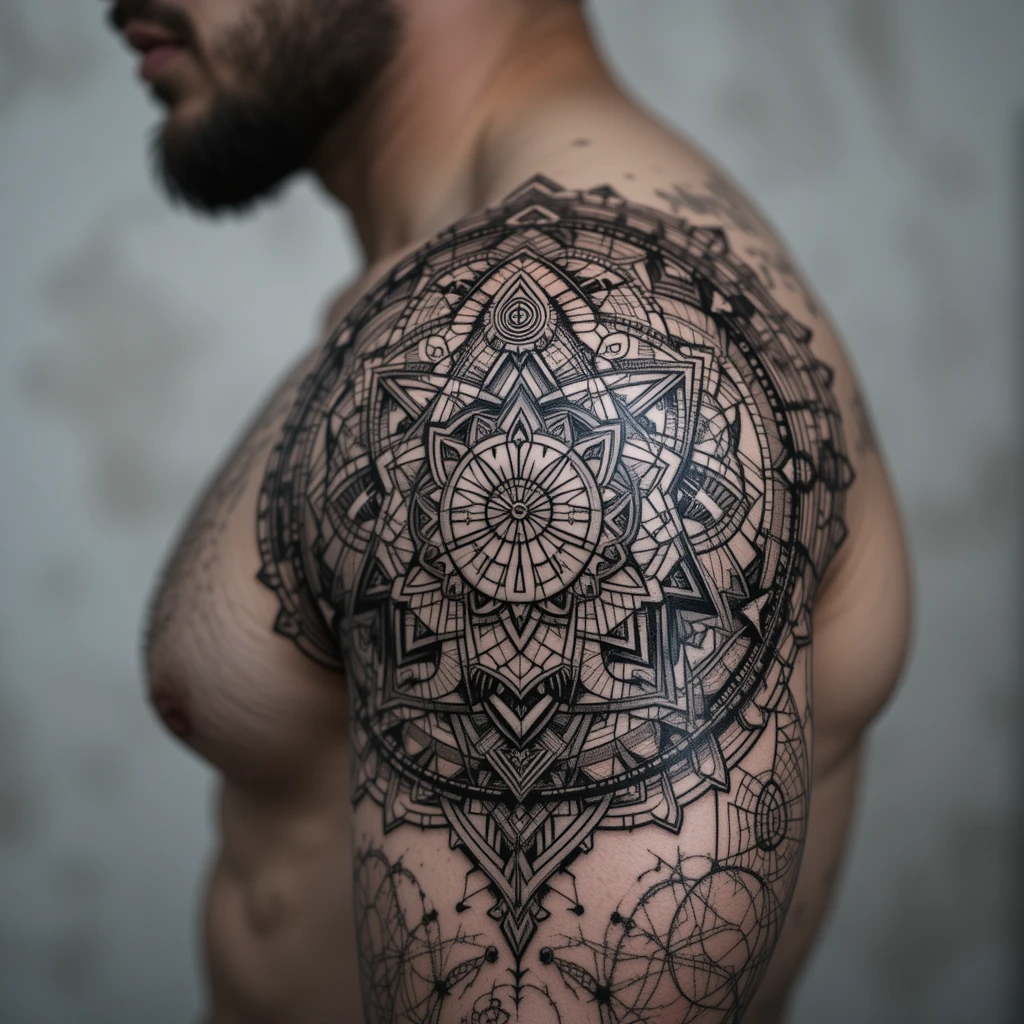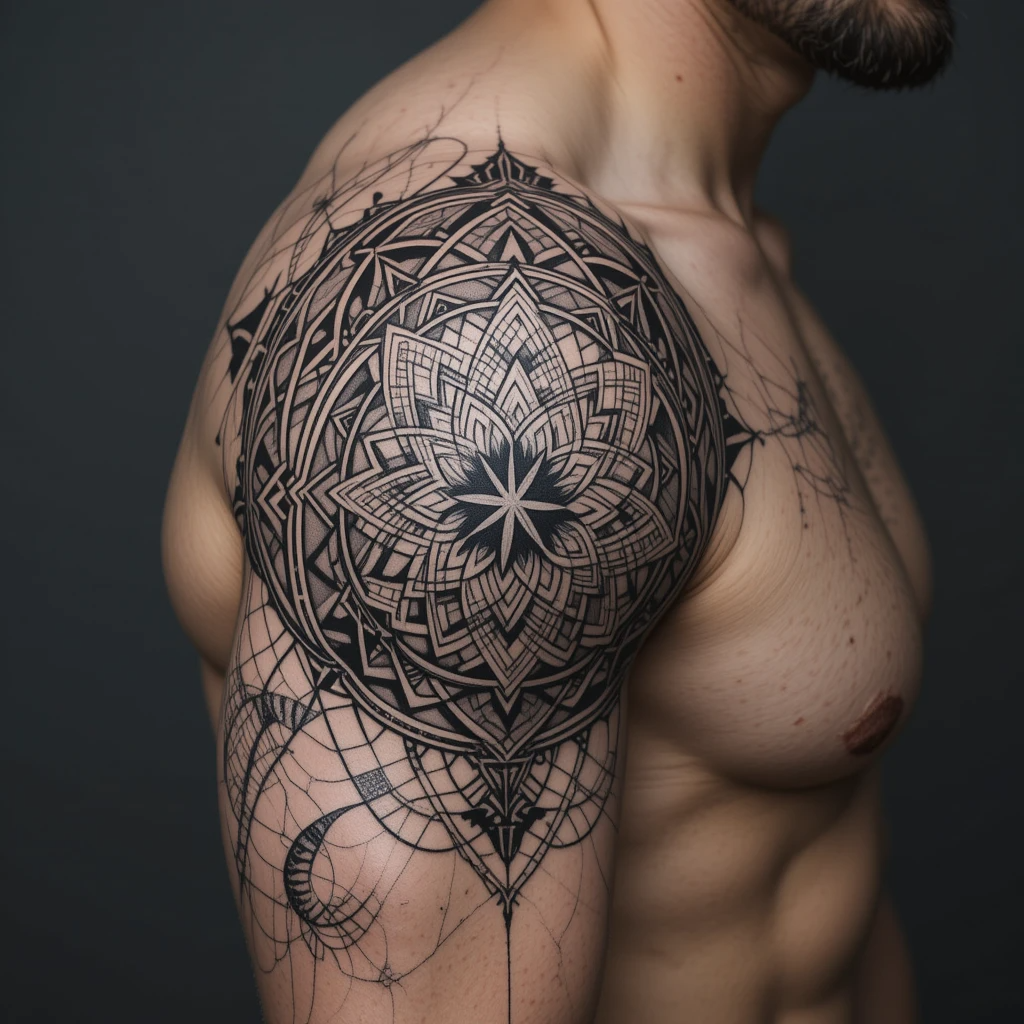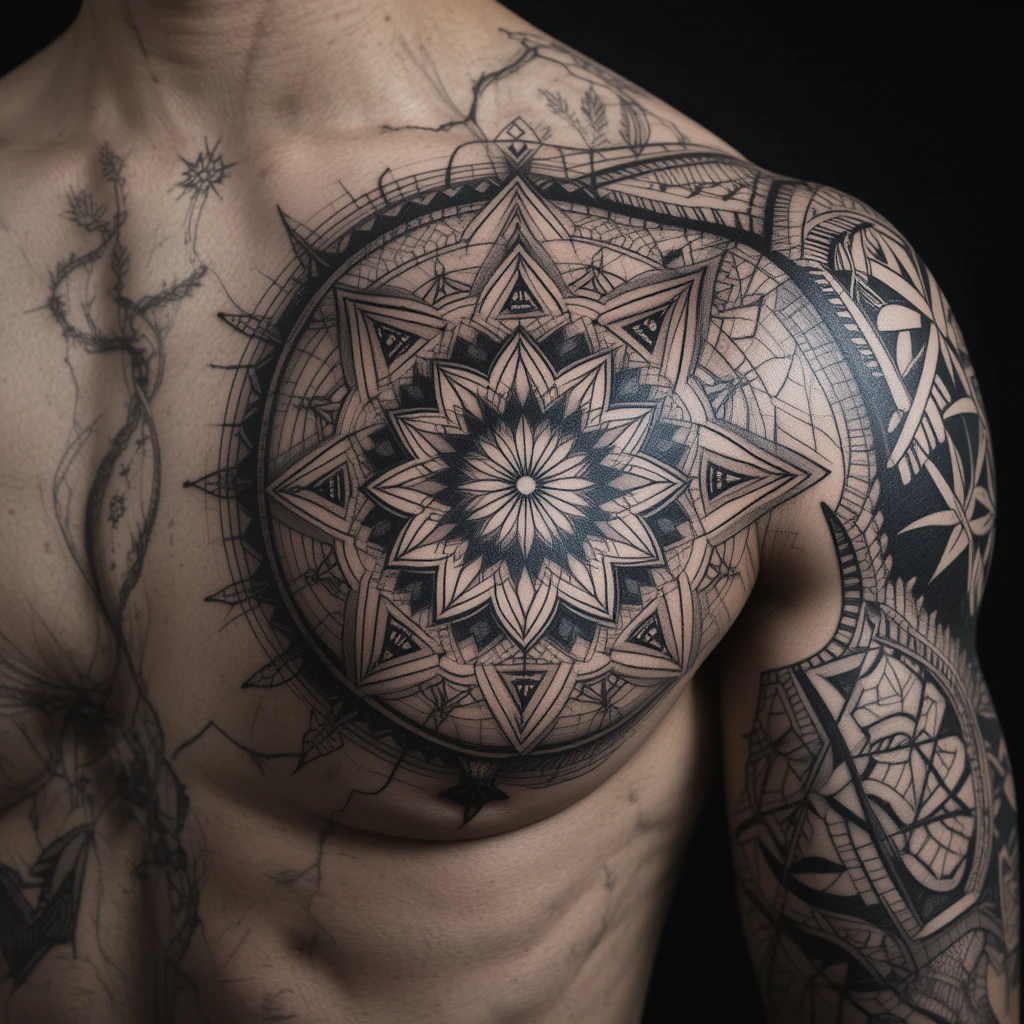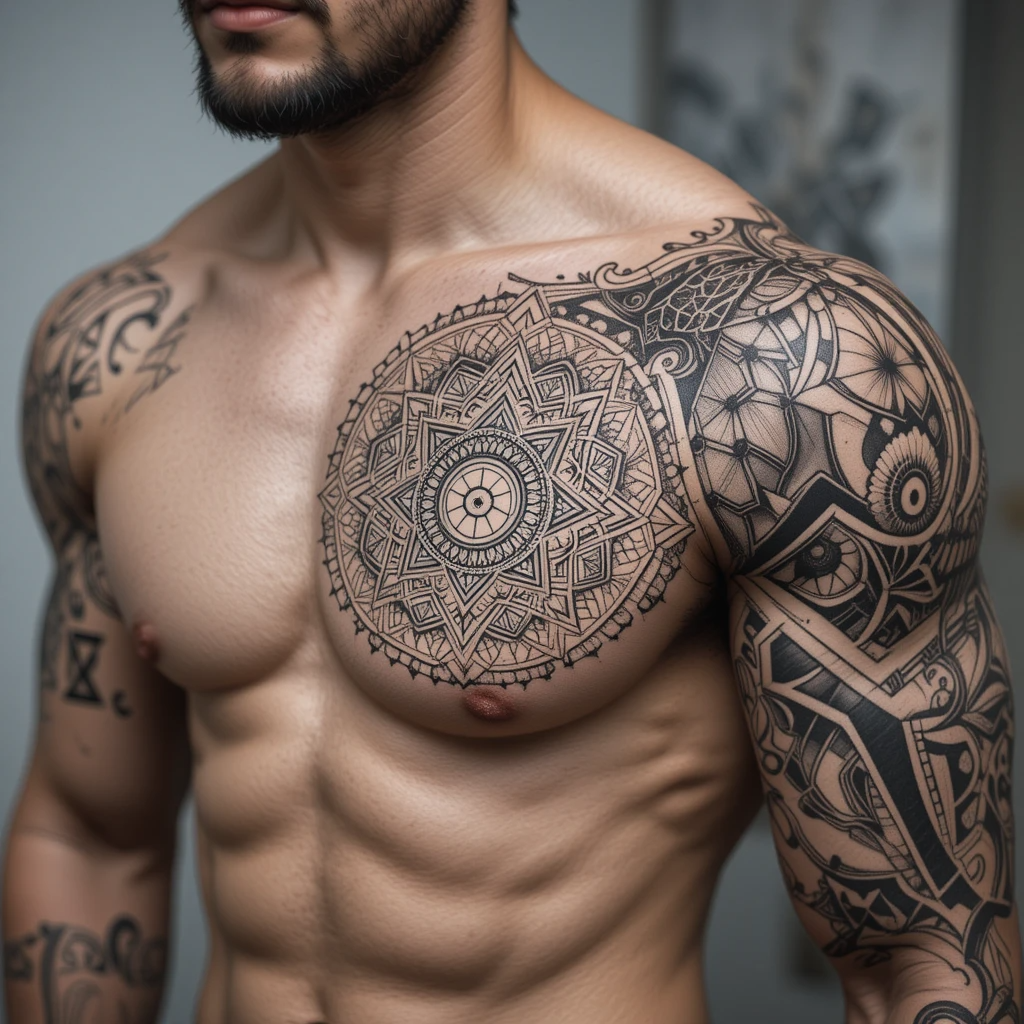In the realm of contemporary tattooing, few styles command as much respect and admiration as geometric mandala work. These intricate designs represent the pinnacle of technical skill and spiritual symbolism, creating body art that is both visually stunning and deeply meaningful. The complex interweaving of precise lines, sacred geometry, and mandala patterns has evolved into one of the most sought-after tattoo styles of our time.
Understanding the Mandala: More Than Just Beautiful Patterns
The word “mandala” comes from Sanskrit, meaning “circle” or “completion.” These circular designs have been used across cultures for thousands of years as tools for meditation, spiritual practice, and artistic expression. In Hindu and Buddhist traditions, mandalas represent the universe, the cosmos, and the journey toward enlightenment. When translated into tattoo art, these sacred symbols become personal talismans of transformation and spiritual growth.
Modern geometric mandala tattoos take these ancient concepts and elevate them through contemporary artistic techniques. The result is body art that bridges the gap between traditional spirituality and cutting-edge design aesthetics.

The Technical Mastery Behind Large-Scale Mandala Work
Creating a large mandala tattoo requires extraordinary skill and precision. These pieces often span entire torsos, backs, or limbs, demanding not only artistic vision but also technical expertise that few tattoo artists possess. The intricate line work, perfect symmetry, and detailed shading require hundreds of hours of work and multiple sessions to complete.
The geometric elements within mandala tattoos serve multiple purposes. They create visual depth and dimension while maintaining the meditative quality that makes mandalas so captivating. Each line must be perfectly placed, each angle precisely calculated, and each element balanced with mathematical precision.
Design Elements and Symbolic Meanings
Central Focus Points: Most mandala tattoos feature a central focal point from which all other elements radiate. This represents the self, consciousness, or the divine spark within each individual.
Layered Complexity: The multiple layers of geometric patterns create depth and represent the various levels of consciousness or spiritual understanding. Each layer can hold personal meaning for the wearer.
Sacred Geometry: The incorporation of geometric shapes like triangles, hexagons, and complex polygons connects the design to universal mathematical principles found throughout nature.
Negative Space: The strategic use of negative space within the design creates breathing room and helps define the intricate patterns, making the overall piece more visually impactful.

The Chest and Torso Canvas: Maximum Impact Placement
Large mandala tattoos on the chest and torso area create some of the most dramatic and impressive body art possible. This placement offers several advantages:
The broad, relatively flat surface of the chest provides an ideal canvas for the symmetrical nature of mandala designs. The natural curves of the body add dimension to the geometric patterns, creating an almost three-dimensional effect as the wearer moves.
Chest mandala tattoos often become the centerpiece of larger body suit projects, with additional elements extending onto the arms, shoulders, and back. This creates a cohesive artistic narrative that can evolve over time.
The Healing and Meditative Aspects
Many clients choose mandala tattoos not just for their aesthetic appeal but for their meditative qualities. The process of getting such an intricate tattoo can become a form of meditation itself, requiring patience, endurance, and mental focus. The finished piece serves as a permanent reminder of this transformative journey.
The circular, symmetrical nature of mandalas is believed to promote feelings of wholeness and balance. For many wearers, their mandala tattoo becomes a focal point for meditation and self-reflection.
Choosing the Right Artist for Geometric Mandala Work
Not every tattoo artist is equipped to handle the complexity of large geometric mandala pieces. When searching for an artist, look for:
- A strong portfolio showing completed large-scale geometric work
- Evidence of precise line work and perfect symmetry
- Experience with dotwork and detailed shading techniques
- Understanding of sacred geometry principles
- Patience and dedication to long-term projects
The investment in finding the right artist cannot be overstated. These pieces often represent years of work and significant financial commitment, making artist selection crucial to the success of the project.
Planning Your Mandala Journey
Large mandala tattoos are rarely completed in a single session. Most require multiple appointments spread over several months or even years. This extended timeline allows for proper healing between sessions and gives both artist and client time to refine and perfect each section.
During the planning phase, consider how the mandala will interact with your body’s natural contours and how it might integrate with existing tattoos or future work. A skilled artist will create custom designs that complement your unique physique and personal aesthetic preferences.
Aftercare for Large-Scale Work
Caring for a large mandala tattoo requires dedication and attention to detail. The extensive line work and shading mean more skin trauma and potentially longer healing times. Following proper aftercare protocols is essential for preserving the intricate details and ensuring the longevity of the artwork.
Cultural Sensitivity and Respect
While mandala tattoos have become mainstream in Western tattoo culture, it’s important to approach these designs with respect for their cultural and spiritual origins. Many artists and clients engage with the spiritual aspects of mandala symbolism as part of their tattoo journey, viewing the process as more than just aesthetic enhancement.

The Future of Geometric Mandala Tattoos
As tattoo technology and techniques continue to evolve, we’re seeing even more complex and detailed mandala work. Artists are pushing the boundaries of what’s possible with geometric precision, incorporating elements like UV-reactive inks, micro-detail work, and innovative shading techniques.
The integration of digital design tools allows artists to create perfectly symmetrical templates while still maintaining the handcrafted quality that makes each piece unique. This fusion of technology and traditional artistry is opening new possibilities for mandala tattoo design.
Making the Commitment
Choosing to get a large geometric mandala tattoo is a significant decision that goes beyond simple aesthetic preference. These pieces represent a commitment to the artistic process, the spiritual journey, and the relationship with your chosen artist. They become part of your personal narrative and often mark important transitions or achievements in life.
The end result – a masterpiece of geometric precision and spiritual symbolism permanently etched into your skin – represents one of the highest forms of tattoo artistry available today. For those ready to embark on this journey, a well-executed mandala tattoo offers a lifetime of beauty, meaning, and personal significance.
Ready to begin your mandala journey? Research artists specializing in geometric work and start planning your path toward this transformative art form.


